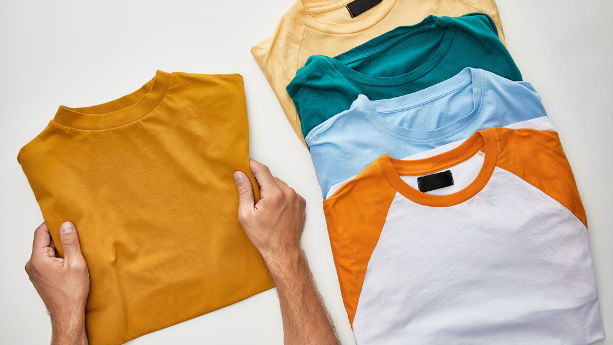
Planning to import and sell clothing or other textile products in Singapore? In this guide, we cover what you must know about standards, lab testing, children’s clothing regulations, and labeling requirements.
Mentioned Products
- Children’s clothing
- T-shirts
- Trousers
- Blouses
- Hoodies
- Sweaters
Content Overview

FREE CONSULTATION CALL (30 MIN)
 Ask questions about compliance requirements
Ask questions about compliance requirements Countries/markets:
Countries/markets:
 Learn how we can help your business
Learn how we can help your business
You will speak with:Ivan Malloci or John Vinod Khiatani
Consumer Protection (CGSR) Regulations
The Consumer Protection (Consumer Goods Safety Requirements) Regulations, or CGSR, aims at enhancing the protection of consumer goods including clothing and textile products in Singapore.
The CGSR requires that general consumer goods must be safe for the consumer. Under the classification of CGSR, clothing and textile products fall into the scope of Category 1 and shall be compliant with relevant international safety standards such as EN standards or ASTM standards.
Safety Standards
As the CGSR is mostly relying on compliance with international standards, importers can refer to such standards before the importation. Below you find the only two standards for children’s clothing and textile that are listed in Appendix E of the CGSR info booklet.
Note that there is no mention of specific standards for non-children’s apparel or textiles.
EN Standards for Children’s Apparel
a. EN 14682 – Cords and drawstrings on children’s clothing
Additionally, the following EN standards might also be applicable to children’s clothing, even though it’s not mentioned on the info booklet:
b. EN 14878 Textiles – Burning behavior of children’s nightwear – Specification
ASTM Standards for Children’s Apparel
a. ASTM F1816-97 – Standard Safety Specification for Drawstrings on Children’s Upper Outerwear
Also, even though it’s not mentioned on the info booklet, there might be other relevant ASTM standards that apply to children’s clothing, such as:
b. ASTM D6545-10 Standard Test Method for Flammability of Textiles Used in Children’s Sleepwear
If you are not sure about the applicable standards for your product, you shall contact a testing company such as SGS, TUV, or Intertek.
Labeling
A visibly and permanently label shall be attached to imported clothing products, usually on the inside center of the neck. However, the position might be different for different clothing.
The label shall be in English and it’s recommended to include the following information as well:
- Country of origin
- Material content
- Fiber composition (e.g. 100% Cotton or 100% Polyester)
- Care instruction
- Size
Note that when it comes to size information or care symbols, you may refer to international standards such as ASTM D6240/D6240M.
Lab Testing
Third-party lab testing is generally not mandatory for clothing products when importing it to Singapore. However, it is the only way to verify if the product is safe and in compliance with relevant standards.
Reputable testing companies such as SGS, or TÜV SÜD can provide lab testing services for clothing and textile products.
Importers do not need to keep track of the applicable standards. Instead, the lab can provide a list of tests needed base on your product type.
Amazon Singapore Compliance Requirements
It is important to read the relevant requirements in the Amazon seller Central before the importation if you are planning to list your products on Amazon
Amazon set requirements on product safety, lab testing, certification, labeling, and other relevant compliance requirements.
Amazon has records for forcing third-party sellers to comply with voluntary standards depending on the product type. Therefore, importers must confirm that they have relevant documents for listing on Amazon.
How does Amazon check product compliance?
Product compliance checks mostly rely on documents such as lab test reports, certificates, product photos, invoices, and manufacturer information. Notice that they may require those documents at any time.
What can happen if we sell non-compliant clothing and textile products on Amazon?
Amazon has the right to remove all unsafety including listed products. In most cases, they have limited their actions to specific SKUs. And they can suspend your product listing and even the entire Amazon account if necessary.
Packaging Requirements for Apparel
Since clothing and textile products can be damaged by liquid, dust, or other factors during the fulfillment process, Amazon set requirements on the product packaging in case of unsafe conditions including material exposure.
Clothing and textiles products must be packaged in shrink-wrap or placed in a sealed poly bag with a cardboard footprint as a backing.
The cardboard must have a strength of at least 24 ECT (edge crush test). Also, Mini-hangers are allowed but traditional hangers are not allowed.
Bag Suffocation Warning
Amazon requires a bag suffocation warning if you decide to package your product in a polybag. Here an example:
Warning: RISK OF SUFFOCATION – Plastic bags can be dangerous. To avoid the danger of suffocation, keep this bag away from babies and children.
Additional Resources
1. States with Toxics in Packaging Laws (Link)
2. Bag Suffocation Warning (Link)






















.png)
.png)
.png)



